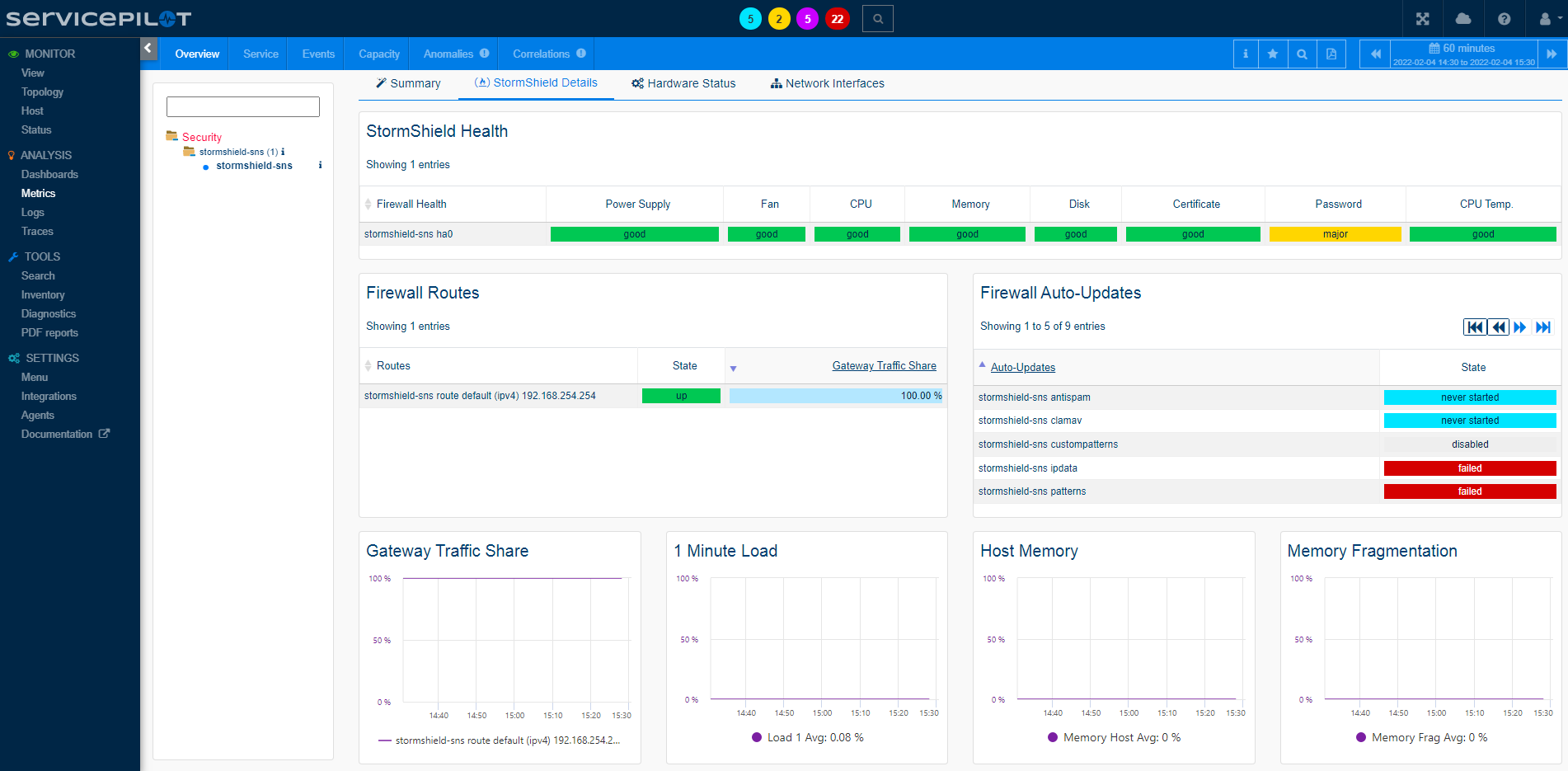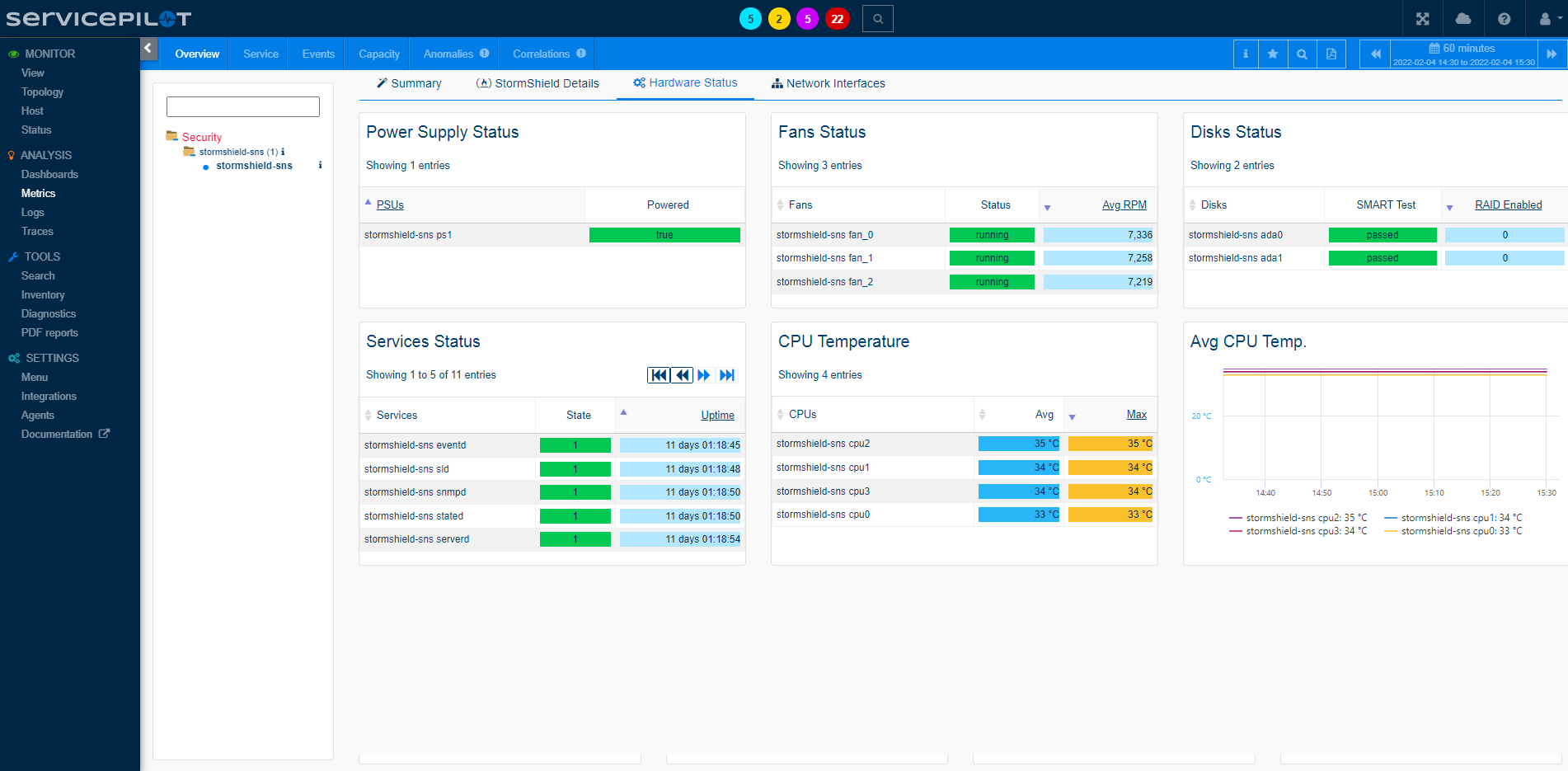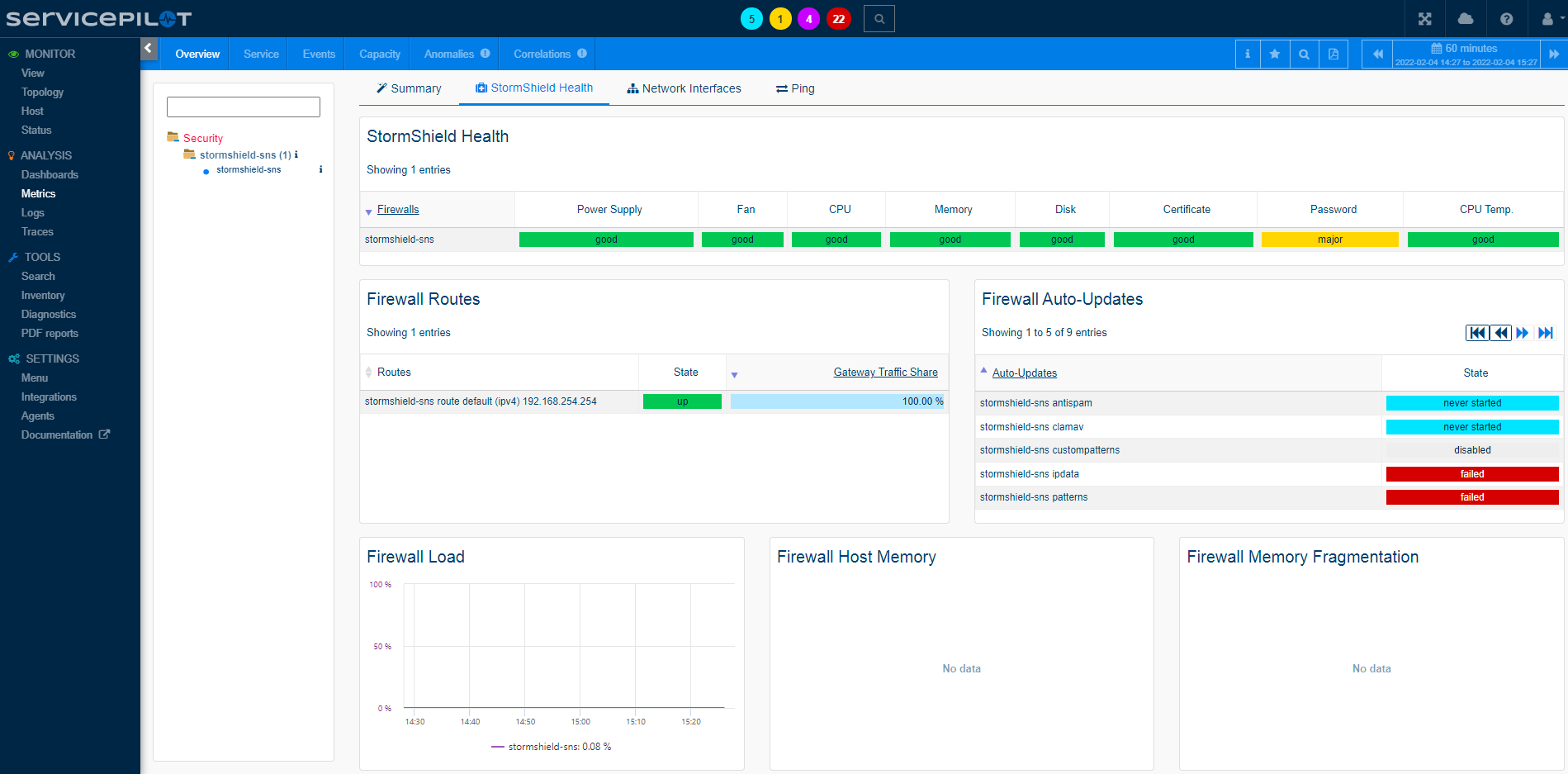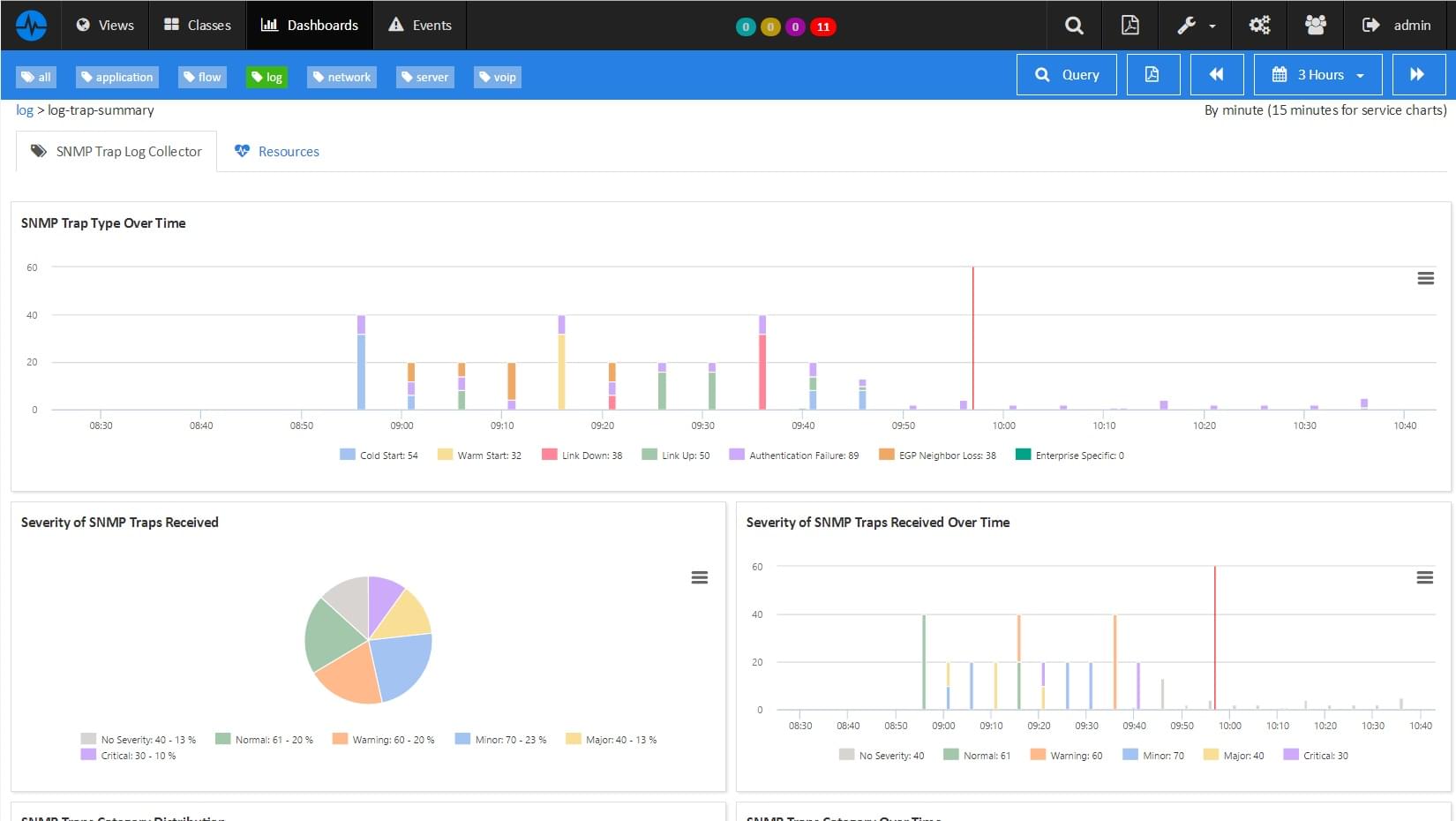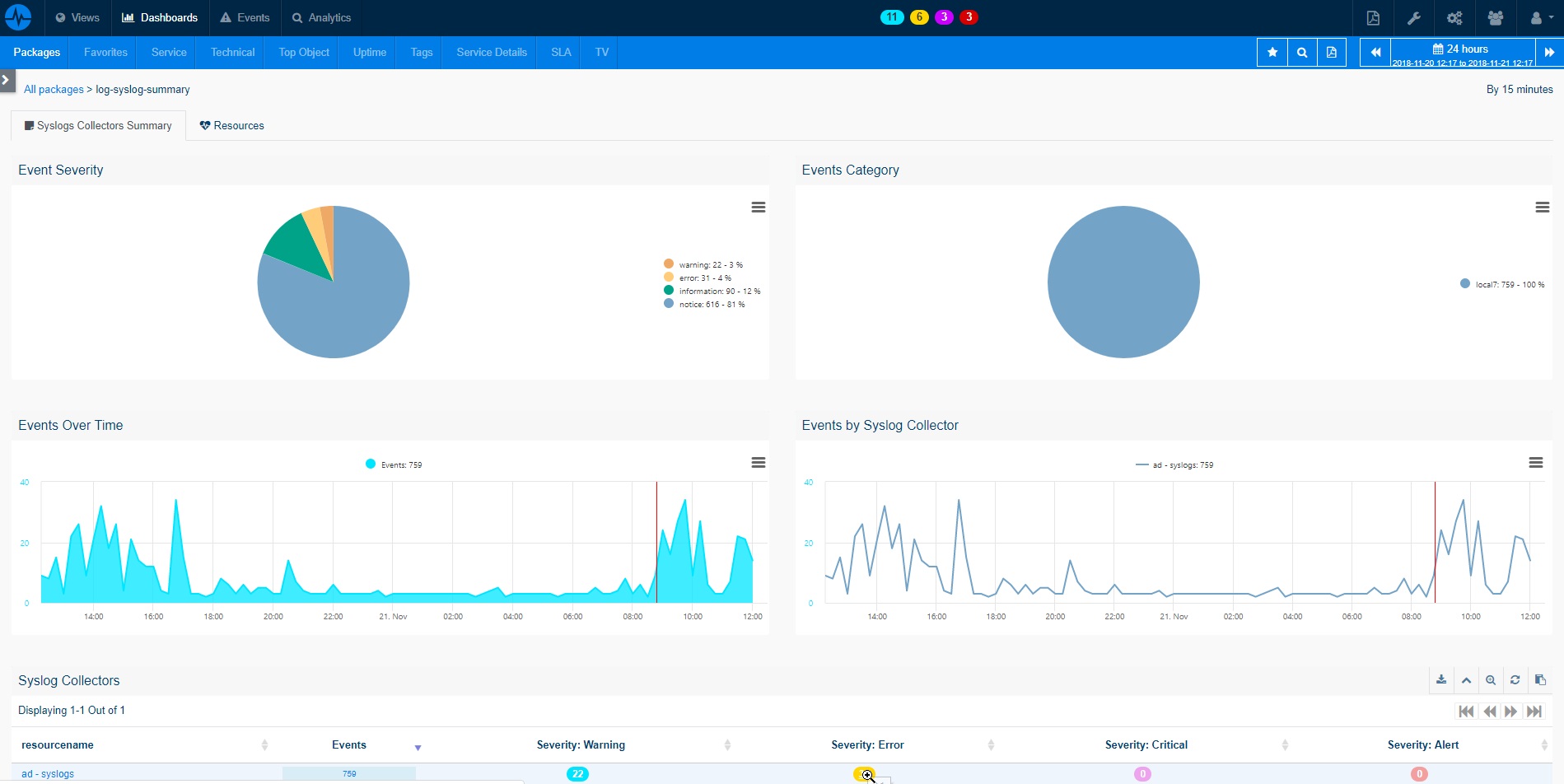What is Stormshield SNS?
Stormshield Network Security (SNS) devices are firewalls providing high-performance network protection.
SNS firewalls provide real time protection: Network segmentation, Intrusion prevention system (IPS), Intrusion detection system (IDS), High availability, Cloud based sandboxing. Control and monitoring: URL filtering, Content filtering, Geolocation of IPs, Detection of vulnerabilities. Secure communication: Site-to-site and mobile IPSec VPN, Mobile SSL VPN.
How to monitor Stormshield SNS firewalls?
ServicePilot makes it very easy to monitor a Stormshield SNS firewall. Simply configure the SNMP interface of the Stormshield SNS device. Then use the ServicePilot web interface to add a resource from the ServicePilot security-stormshield-sns package.
The monitoring statistics gathered in this way include:
- Network: Ping Response Time and Interfaces activity.
- System: CPU and memory.
- Environment: Fan, Temperature and Power Supply.
How to install a stormshield-sns resource?
- Use your ServicePilot OnPremise installation or a SaaS account.
- Add a new stormshield-sns resource via the web interface (
/prmviewsor/prmresources) or via API (/prmpackagespage), the default ServicePilot agent or another agent will be provisioned automatically.
Details of the stormshield-sns package are located in the
/prmpackagespage of the software.
Benefits
ServicePilot enables you to deliver IT services faster and more securely with automated discovery and advanced monitoring features.
By correlating the technology STORMSHIELD SNS with APM and infrastructure monitoring, ServicePilot is able to provide a more comprehensive view of an organization's IT environment.
This allows IT teams to quickly identify and diagnose issues that may be impacting application performance, and take corrective action before end-users are affected.
Start with a free trial of our SaaS solution. Explore our plans or contact us to find what works best for you.

